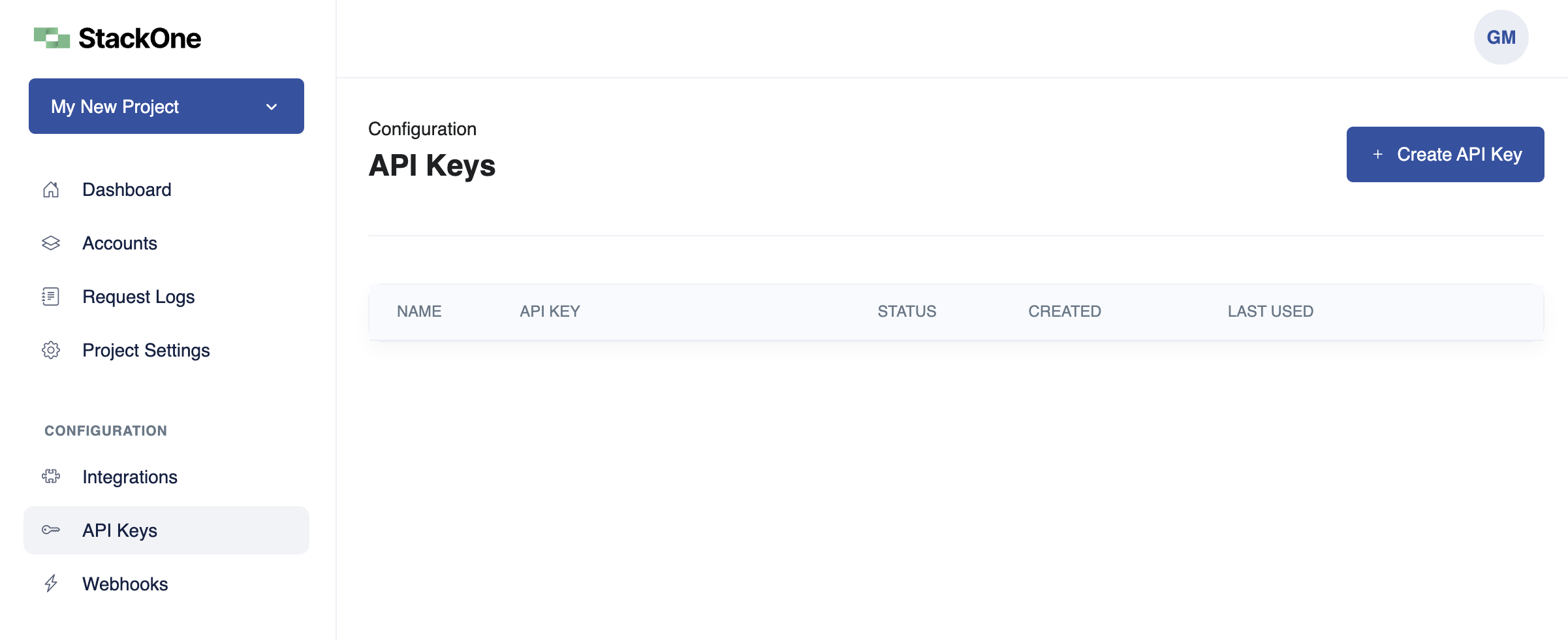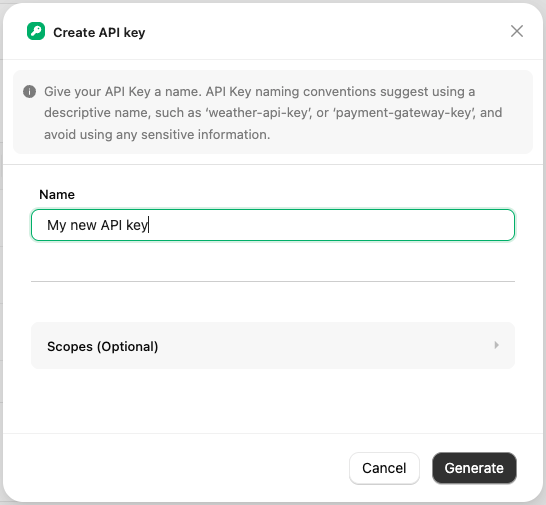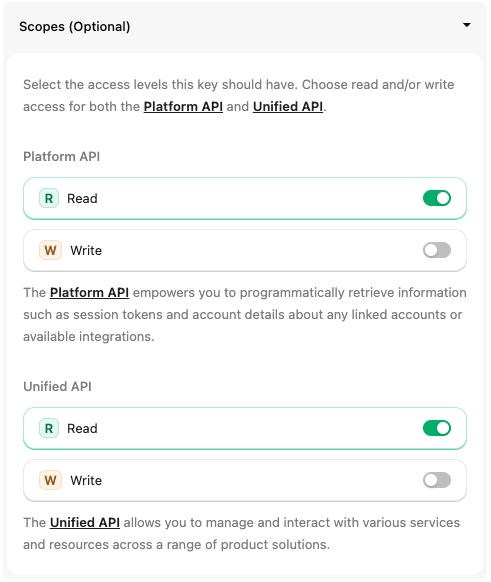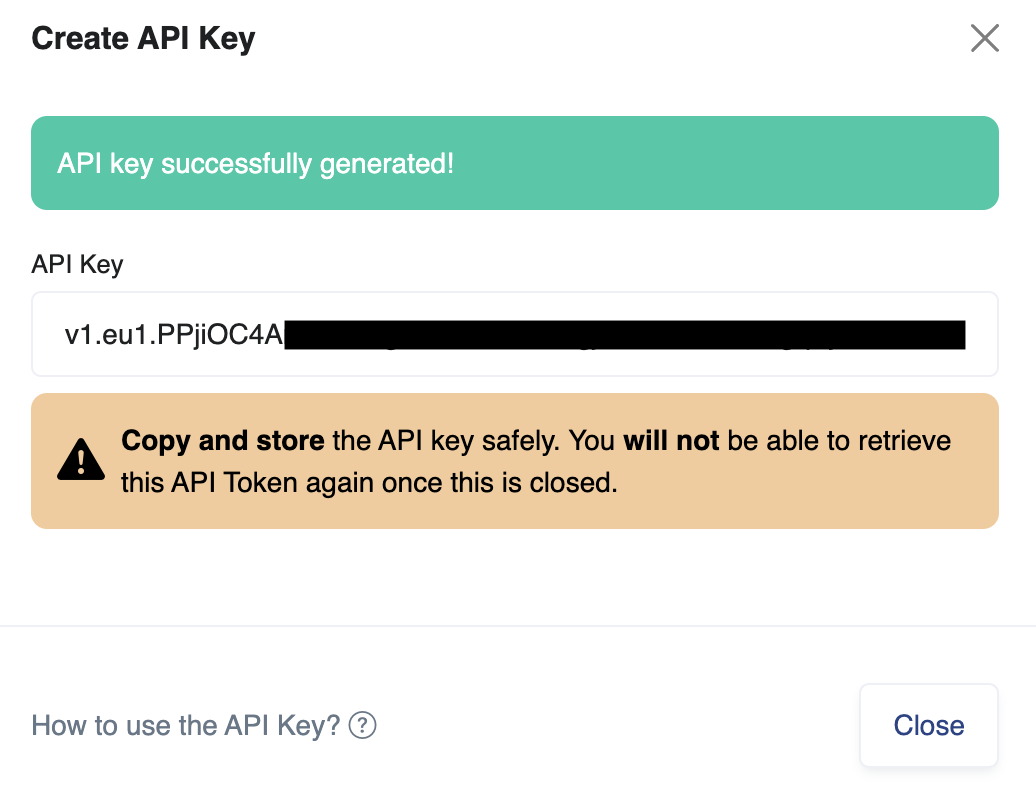Step-by-Step Guide to Generating an API Key
1
Access the API Key Management Section
- Log in to StackOne and go to the “API Keys” section in the left navigation menu.
- This is where you can generate and manage your API keys.

2
Generate a New API Key
- Click the “Create API Key” button. In the popup dialog, enter a name for your key (e.g., “stackone-ats-key”).
- This name is a label and cannot be changed later. Click “Generate” to create your unique API key.

3
Select API Key Scopes (optional)
- By default, API keys are created with full permissions. If you need to restrict the key’s access, you can select specific scopes by expanding the “Scopes” section selecting the scopes that match your application’s needs.
- Read and/or write scopes can be selected for each of the Provider and Unified APIs.
Advanced Security Features: Advanced security features, including fine-grained API key scopes, are an add-on and may not be available on all plans. Contact your account manager if you would like access to these features.

4
Securely Store the API Key
- The API key will be displayed on-screen. Copy it immediately and store it securely, as this is the only time it will be shown.
- If you lose the key, you’ll need to generate a new one. Store the key in a secure location, such as a password manager.

5
Managing API Keys
- The new API key will be listed in the “API Keys” tab.
- You can view, revoke, or regenerate keys as needed, such as if there’s a security issue.

Using the generated API Key
Once you’ve generated your API key, it’s essential to know how to use it for authentication. You will need to include the API key for every API call. For basic authentication, you can use the API key in the username or password field when calling any API endpoint, such as the List Accounts endpoint. The use of API keys is tracked, allowing you to monitor their activity and revoke them if necessary. The Last used column on the API keys table indicates the last call made with each key. For security reasons, you are encouraged to regularly review your API keys list and revoke any that are no longer needed.The Last used data is only collected since 1st June 2025 and calls made before this date will not be reflected in the table.

